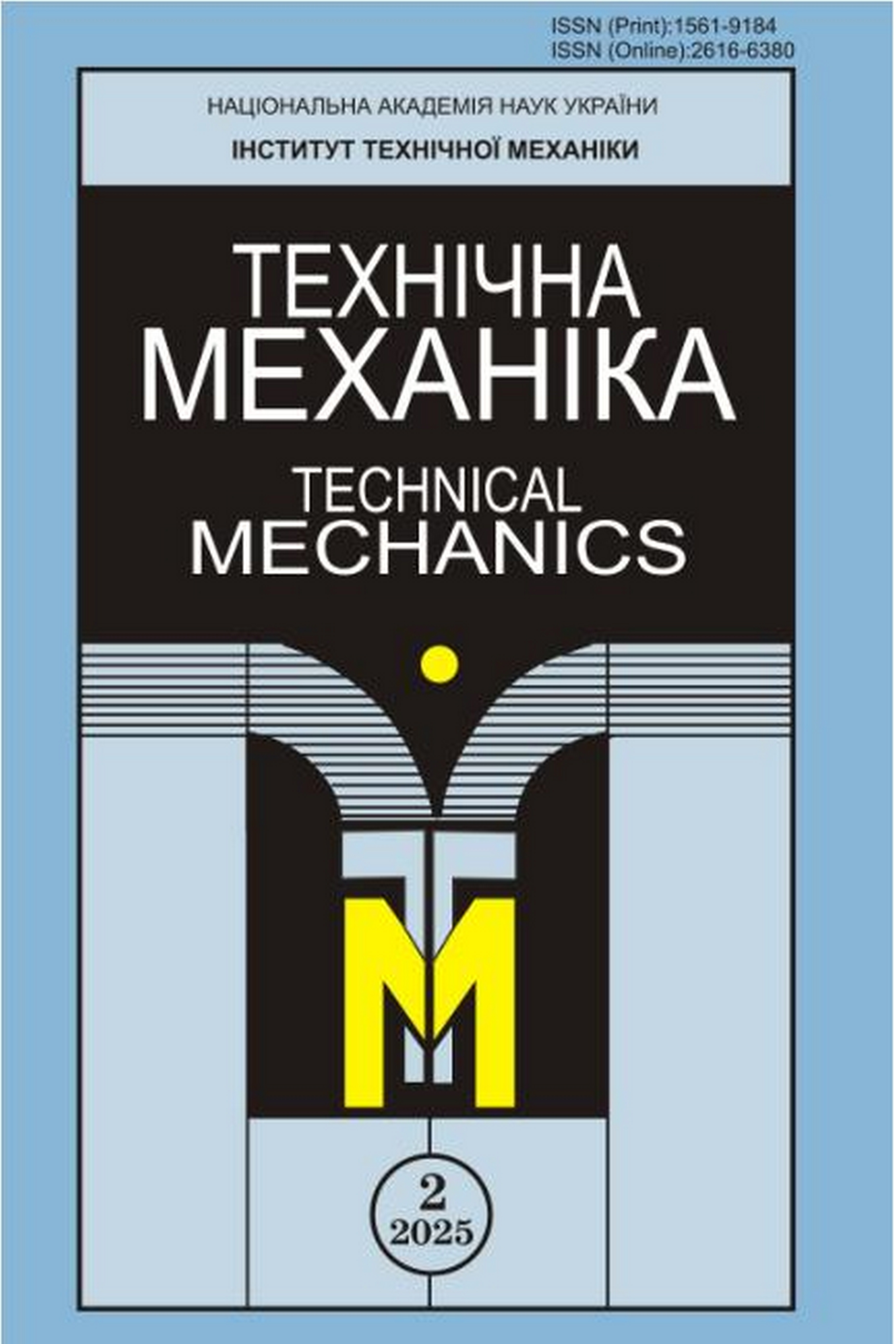PERFORMANCE COMPARISON OF A TRADITIONAL AND A MAGNETICALLY SHIELDED HALL THRUSTER
Keywords:
experimental results, Hall thruster, magnetic field configuration, magnetic shielding, magnetic system.Abstract
DOI: https://doi.org/10.15407/itm2025.02.050
The goal of this paper is to analyze and compare the performance characteristics of two Hall thruster (HT) types of (HT): a traditional and a magnetically shielded (MS) one. The study is aimed at determining their efficiency, durability, and possibilities for use in space missions. Particular attention is paid to the effect of magnetic shielding on the HT durability, the propellant utilization efficiency, and the energy parameters.
The study was conducted using theoretical calculations, experimental data, and a numerical simulation of the HT operation. For the analysis, methods of mathematical simulation of plasma processes and bench tests were used. Particular attention was paid to the study of ionization processes, charged particle dynamics, and the HT magnetic field distribution.
The study made it possible to identify the key differences between the traditional and MS thrusters, in particular:
- The MS thruster demonstrates a significantly lower level of wall erosion, which increases its lifetime.
- The “traditional” thruster has a higher efficiency, but a shorter lifetime than the ME thruster.
- Magnetic shielding affects the plasma distribution, which changes ion flow dynamics and may affect the plume shape.
- The overall MS thruster efficiency can be improved by optimizing the magnetic field parameters and channel geometry.
The paper presents a detailed analysis of the effect of magnetic shielding on the HT performance. It is shown that magnetic shielding allows one to reduce channel erosion without any significant decrease in the specific impulse, which is an important factor for extending the thruster lifetime. An improved methodology is proposed for evaluating the efficiency of MS HT plasma processes with account for the spatial configuration of the magnetic field and particle dynamics. The obtained results can contribute to further optimization of the HT design.
The results of this work may be used in improving existing HT designs, optimizing HT parameters, and developing new models with improved performance. Magnetic shielding may be a key engineering solution for extending the thruster lifetime, which is especially important for long-term space missions.
REFERENCES
1. Dankanich J. Low-thrust mission design and application. 46th AIAA/ASME/SAE/ASEE Joint Propulsion Conference & Exhibit, 2010, Nashville, TN. Reston, Virigina. Paper 2010-6857.
https://doi.org/10.2514/6.2010-6857
2. De Grys K. H., Mathers A., Welander B., Khayms V. Demonstration of 10,400 hours of operation on 4.5 kW qualification model Hall thruster. 46th AIAA/ASME/SAE/ASEE Joint Propulsion Conference & Exhibit, July, 2010, Nashville, TN. Reston, Virigina. Paper 2010-6698.
https://doi.org/10.2514/6.2010-6698
3. Mikellides I. G., Katz I., Hofer R. R., Goebel D. M., De Grys K. H., Mathers A. Magnetic shielding of the acceleration channel in a long-life Hall thruster. Physics of Plasmas. 2011.V.18. 033501.
https://doi.org/10.1063/1.3551583
4. Hofer R. R., Goebel D. M., Mikellides I. G., Katz I. Design of a laboratory Hall thruster with magnetically shielded channel walls, Phase II: Experiments. 48th AIAA/ASME/SAE/ASEE Joint Propulsion Conference & Exhibit, July, 2012, Atlanta, Georgia. Reston, Virigina. AIAA-2012-3788.
https://doi.org/10.2514/6.2012-3788
5. Mikellides I. G., Katz I., Hofer R. R. Design of a laboratory Hall thruster with magnetically shielded channel walls, Phase I: Numerical simulations. 47th AIAA/ASME/SAE/ASEE Joint Propulsion Conference & Exhibit, July, 2011, Atlanta, Georgia. Reston, Virigina. Paper 2011-5809.
https://doi.org/10.2514/6.2011-5809
6. Mikellides I. G., Katz I., Hofer R. R., Goebel D. M. Design of a laboratory Hall thruster with magnetically shielded channel walls, Phase III: Comparison of theory with experiment. 48th AIAA/ASME/SAE/ASEE Joint Propulsion Conference & Exhibit, July, 2012, Atlanta, Georgia. Reston, Virigina. AIAA -2012-3789.
https://doi.org/10.2514/6.2012-3789
7. Mikellides I. G., Katz I., Hofer R. R., Goebel D. M. Magnetic shielding of walls from the unmagnetized ion beam in a Hall thruster. Applied Physics Letters. 2013. V.102. No. 2. 023509.
https://doi.org/10.1063/1.4776192
8. Cosimo D., Misuri T., Gregucci S., Pedrini D., Dannenmayer K. Magnetically shielded HT100 experimental campaign. IEPC, October 2017, Atlanta, Georgia. 2017. Paper 2017-372.
9. Hofer R. R., Cusson S. E., Lobbia R. B., Gallimore R. D. The H9 magnetically shielded Hall thruster. IEPC, October 2017, Atlanta, Georgia. 2017. Paper 2017-332.
10. Hofer R. R., Polk J., Mikellides I., Ortega A. L., Conversano R., Chaplin V., Lobbia R. B., Goebel D., Kamhawi H., Verhey T., Williams G., Mackey J., Huang W., Yim J., Herman D., Peterson P. Development status of the 12.5 kW Hall effect rocket with magnetic shielding (HERMeS). 35th IEPC, October 2017, Atlanta, Georgia. 2017. Paper 2017-232.
https://doi.org/10.2514/6.2016-4825






